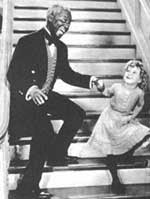When you're old enough to join Daddy and Mommy at a football or baseball game, chances are that you'll hear somebody sing our national anthem, "The Star Spangled Banner." Its kinda funny how many different ways singers try to do that these days. Anyway I think its also fun to know that "The Star Spangled Banner" became our country's national anthem just a couple years before your GGPa was born.
The song came out of one of the many wars our soldiers fought. This time it was the War of 1812 against the British. That war started because Britain seized American ships and forced American sailors into the British navy. In 1812 President James Madison became the first U.S. president to ask Congress to declare war. Our national anthem came out of that war.
During the war, on September 14, 1814, Francis Scott Key wrote a poem entitled 'To The Defense of Fort McHenry', while a hostage on board a British ship in the Baltimore harbor. He did not mean for it to become a song, or a national anthem, but it soon became popular. A Baltimore music store owner first printed the song under the title "The Star Spangled Banner." After it gained popularity, somebody suggested it be put to a British tune by John Stafford Smith, 'To Anacraeon in Heaven'. After modifying the tune a little, musicians combined it with Key's lyrics and it became our song "The Star Spangled Banner." The secretary of the Navy made it the official tune to accompany flag raisings in 1889.
In 1916 President Woodrow Wilson ordered the anthem be played at military and naval occasions. However, it wasn't officially adopted by Congress as our national anthem until 1931. The first verse is the one we all learn to sing. You'll learn it as well. Here are all four.
What so proudly we hail'd at the twilight's last gleaming?
Whose broad stripes and bright stars, thro' the perilous fight,
O'er the ramparts we watch'd, were so gallantly streaming?
And the rockets' red glare, the bombs bursting in air,
Gave proof thro' the night that our flag was still there.
O say, does that star-spangled banner yet wave
O'er the land of the free and the home of the brave?
On the shore dimly seen thro' the mists of the deep,
Where the foe's haughty host in dread silence reposes,
What is that which the breeze, o'er the towering steep,
As it fitfully blows, half conceals, half discloses?
Now it catches the gleam of the morning's first beam,
In full glory reflected, now shines on the stream:
'Tis the star-spangled banner: O, long may it wave
O'er the land of the free and the home of the brave!
And where is that band who so vauntingly swore
That the havoc of war and the battle's confusion
A home and a country should leave us no more?
Their blood has wash'd out their foul footsteps' pollution.
No refuge could save the hireling and slave
From the terror of flight or the gloom of the grave:
And the star-spangled banner in triumph doth wave
O'er the land of the free and the home of the brave.
O, thus be it ever when freemen shall stand,
Between their lov'd homes and the war's desolation;
Blest with vict'ry and peace, may the heav'n-rescued land
Praise the Pow'r that hath made and preserv'd us a nation!
Then conquer we must, when our cause is just,
And this be our motto: "In God is our trust"
And the star-spangled banner in triumph shall wave
O'er the land of the free and the home of the brave!
I pray that you will grow up to be as proud of being an American as your GGMa and I are. We believe it is the greatest nation on earth. God bless America and God bless you too, my dear Great-Grandson.
Love,
GGPa





